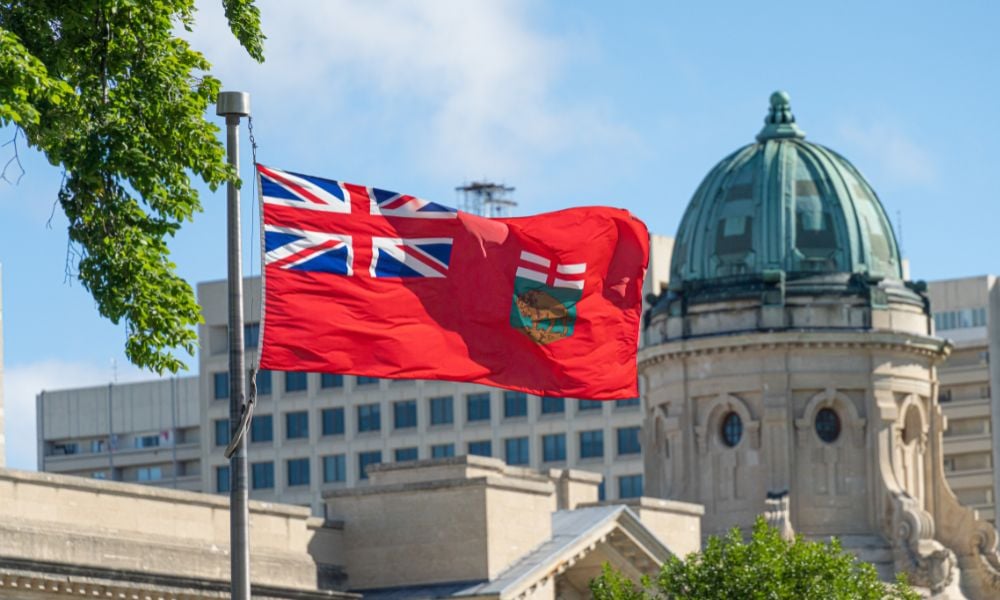Canadian corporations need to embrace whistleblowers if they operate or trade in the U.S., where a new bounty system and greater protections have created a favorable environment for whistleblowing, legal experts say.
“U.S. employees are aware of the legislation and are taking advantage of it,” says Andrew Gray, a litigator at Torys LLP in Toronto.
The attention paid by Canadian businesses to whistleblowing intensified last year when Canadian National Railway Co. became one of the first Canadian companies to be sued under whistleblower protections set out in the Sarbanes-Oxley Act.
Timothy Wallender, a trainmaster at the CNR’s Harrison Yard in Memphis, Tenn., sued his former employer claiming he was fired after raising concerns that the company’s dwell time statistics were false.
The complaint, filed in the Western District of Tennessee, alleges a key measurement of a railway’s efficiency is the length of time railcars spend in a terminal before being sent out in a newly assembled train, known as “terminal dwell time” — the longer the dwell time, the less efficient the operation.
The complaint alleges “favorable statistics on terminal dwell at Harrison Yard are based on persistent and pervasive fraud,” which CNR denies.
The complaint argues “statistics about a railroad’s dwell time are material to shareholders and prospective shareholders when deciding whether to buy, hold or sell the railroad’s shares.”
Wallender claims supervisor Andrew Martin ordered employees to “falsely list trains as having departed from the Harrison Yard even though the trains had not left the yard” and told employees to change CNR computers to show trains left the yard 30 minutes earlier than they did. Wallender claims when he complained and brought it to management’s attention, he was disciplined and later fired.
So he sued under the whistleblower protections of U.S. Code title 18, s. 1514A, which prevents a publicly traded company from taking retaliatory action against an employee who reports fraud against shareholders. The Wallender suit alleges compensation of the company’s then-chief operating officer, Keith Creel, was tied to the share price. The complaint alleges “Martin told employees at Harrison Yard he had a green light carte blanche from Creel to implement his schemes for using false records to show lower than actual dwell time at Harrison Yard.”
CNR’s law firm declined to comment on the case. A spokesman says CNR’s policy is not to comment on ongoing litigation, but added “CN vigorously denies the allegation that its termination of Timothy Wallender for cause violated the whistleblower provisions of the Sarbanes-Oxley Act.”
The Wallender case is a typical whistleblower action. The Occupational Safety and Health Administration of the U.S. Federal Department of Labor is responsible for whistleblowing under more than 20 U.S. statutes, including Sarbanes. In 2013, there were 2,920 whistleblowing complaints and 173 cases were filed under Sarbanes protections. There have been more than 1,700 Sarbanes whistleblowing cases filed since 2006. Last year OSHA dealt with 251 Sarbanes cases. Two were held to have merit, 38 settled, 142 were dismissed, 25 were kicked out, and 44 withdrawn. There has been an uptick in settlements over the past few years.
That’s because U.S. lawyers say initially whistleblower jurisprudence was narrowly interpreted following the introduction of protections in Sarbanes, which was rooted in the financial frauds of WorldCom and Enron Corp. in the late 1990s, but that is changing due to new laws and changes in processes.
Kathleen Clark, a law professor at Washington University Law and an attorney who focuses on whistleblower suits, says initially “the statutory protections for whistleblowers was more of an illusion than a reality.”
That’s because OSHA was tasked with first receiving the cases. If they don’t act in 180 days, cases can transfer to the federal District Court. “While OSHA had a lot of experience with workplace safety, it didn’t have experience with financial fraud,” Clark explains. “OSHA was frankly hostile to claims of whistleblowers seeking protections.”
But that’s changing. She says when President Barack Obama was elected, he appointed different people to be administrative law judges under OSHA. Clark says they “are adopting legal principles and interpreting the law in a way that is frankly very favorable toward whistleblowers and quite a challenge for management.”
Moreover, the recent Dodd-Frank amendments sought to fix some of the weak nesses that emerged in the case law that was developing under Sarbanes-Oxley. For example, courts determined that Sarbanes didn’t apply to subsidiaries, despite language in the legislation suggesting it did. Dodd-Frank clarifies that.
But more importantly, what Dodd-Frank does is allow a whistleblower to claim between 10-39 per cent of any penalty meted out by the U.S. Securities and Exchange Commission that exceeds US$1 million, provided the activity is reported to the securities regulator.
“That’s a game changer,” says Clark, adding that Dodd-Frank has “broader and more vibrant protections” for whistleblowers. For example, they can remain anonymous, at least up to the point that they collect a reward.
The Dodd-Frank program is garnering tips, Gray notes. According to the annual report of the chief of the office of the whistleblower, which was set up under the SEC and is now in its third year, the office paid out more than $US14.8-million in its fiscal year 2013, which ended in August.
The number of tips under that legislation has increased to 3,238 from 3,001 in 2012 and 338 in 2011. While a typical award has tended to be small — in the $50,000 range — that is expected to rise as the SEC secures hefty penalties stemming from the financial meltdown of 2008.
In September of 2013, it paid $14-million to a “whistleblower whose information led to an SEC enforcement action that recovered substantial investor funds.” The money comes out of a separate $US439-million whistleblower war chest that the OWB oversees.
Interestingly, no single category of tip dominates. The three largest are corporate disclosures and financials, which accounted for 17.2 per cent of tips or complaints, next was offering fraud (17.1 per cent), and manipulation (16.2 per cent). Other categories include things like insider trading, pricing and trading, and complaints under the U.S. Foreign Corrupt Practices Act.
Most tips come from California, followed by New York and Florida. The SEC received 62 tips from Canadians, Gray says, making it the second most active country behind the U.K. That was up from 46 Canadian tips last year.
But it’s not just Dodd-Frank and Sarbanes that can trip Canadian companies up when it comes to whistleblowers. Gray notes there is also the U.S. False Claims Act, which allows whistleblowers to file what’s called a qui tam lawsuit against a party that has financially defrauded the federal government. “It can actually reward hefty payments to whistleblowers and impose pretty hefty fines for companies that are offside,” Gray says.
Lawyers say companies need to start taking whistleblowers seriously, especially with the incentives in place for people to come forward to the SEC.
However, it’s retaliation against whistleblowers that often leads to a company becoming embroiled in litigation and getting splashed on the front page.
“From a company perspective, what you want is the person to report internally,” says Richard Moberly, an associate dean and law professor at the University of Nebraska College of Law, who has studied 10 years of whistleblower cases brought under Sarbanes. He says the “common misconception is that whistleblowers are troublemakers or snitches. They see themselves as loyal to an organization and are stunned when retaliated against. They think they are reporting something the organizations wants to know.”
In fact, he says, whistleblowers don’t normally report incidents to outside authorities unless they have been ignored or retaliated against.
Riyaz Dattu, an international trade lawyer at Osler Hoskin & Harcourt LLP in Toronto, says: “We are seeing a number of our clients be very proactive when they get whistleblower reports. They want to take whistleblowers seriously. If they don’t engage, there’s a chance of the whistleblower going to the regulators.”
Lawyers say companies that are serious about dealing with whistleblowers, and not just sweeping their allegations under the rug, need to build a formal, steadfast whistleblower program to encourage reporting.
It should have the following seven components:
Clear reporting
Moberly advises general counsel “put a real system in place where people are trained to receive whistleblower complaints and know what to do with them when they get them.” He calls toll-free numbers or hotlines “window dressing,” where complaints often fall into a black hole never to be heard from again.
Rather, the reporting system needs to be to the top levels of management and an executive needs to be appointed in charge of the program so there’s accountability.
Marvin Pickholz, a former national assistant director of the SEC’s Division of Enforcement who is now a lawyer in the white-collar practice group at Duanne
Morris LLP in New York, says, “I think the whistleblower has to be able to report directly to the chair of the board or the CEO.”
Create disclosure culture
Clark says companies need to create a culture of compliance around whistleblowing with formal procedures. It shouldn’t just be “paper compliance,” she says, but needs to be a “real, organizational commitment to efficient practices” so that it becomes routine and eliminates the fear for whistleblowers coming forward.
No retaliation
Dattu says the policy must be clear that there will be no retaliation if a person comes forward in good faith, even if the complaint proves to be incorrect. If a company fires a whistleblower because of competence, then it needs to be well-documented.
Investigation
The whistleblower program should include a proper investigation process by qualified persons who are trained in such matters.
Reporting
The whistleblower should be kept apprised of what’s happening with their complaint and engaged in the process so they don’t feel ignored.
Training and awareness
Employees need to be informed of the whistleblower process and those involved in its implementation need proper training on how it works and the steps that need to be taken.
Communicate developments
If the whistleblower program unearths improper conduct that results in organizational change, then that needs to be reported to staff. “When employees see change to a compliance program, they realize their concerns have been taken seriously.”
Lawyers say don’t be surprised to see more whistleblower fallout here in Canada, which has few such laws. While audit committees of public companies are supposed to develop a whistleblower system, there is little legislation in this area.
However, Gray notes the Ontario Securities Commission is working on a whistleblower program. Whether it will feature incentives like the U.S. system remains to be seen.
Clark says a bounty program like that created in Dodd-Frank is necessary because “whistleblowing is not a career enhancement device. In fact, it is often a career-ending device.
“The reason I think Dodd-Frank has been so effective is that the financial incentives are so substantial that they have the effect of compensating whistleblowers not just for a loss of job, but for a loss of career, because that’s often what happens.”
“U.S. employees are aware of the legislation and are taking advantage of it,” says Andrew Gray, a litigator at Torys LLP in Toronto.
The attention paid by Canadian businesses to whistleblowing intensified last year when Canadian National Railway Co. became one of the first Canadian companies to be sued under whistleblower protections set out in the Sarbanes-Oxley Act.
Timothy Wallender, a trainmaster at the CNR’s Harrison Yard in Memphis, Tenn., sued his former employer claiming he was fired after raising concerns that the company’s dwell time statistics were false.
The complaint, filed in the Western District of Tennessee, alleges a key measurement of a railway’s efficiency is the length of time railcars spend in a terminal before being sent out in a newly assembled train, known as “terminal dwell time” — the longer the dwell time, the less efficient the operation.
The complaint alleges “favorable statistics on terminal dwell at Harrison Yard are based on persistent and pervasive fraud,” which CNR denies.
The complaint argues “statistics about a railroad’s dwell time are material to shareholders and prospective shareholders when deciding whether to buy, hold or sell the railroad’s shares.”
Wallender claims supervisor Andrew Martin ordered employees to “falsely list trains as having departed from the Harrison Yard even though the trains had not left the yard” and told employees to change CNR computers to show trains left the yard 30 minutes earlier than they did. Wallender claims when he complained and brought it to management’s attention, he was disciplined and later fired.
So he sued under the whistleblower protections of U.S. Code title 18, s. 1514A, which prevents a publicly traded company from taking retaliatory action against an employee who reports fraud against shareholders. The Wallender suit alleges compensation of the company’s then-chief operating officer, Keith Creel, was tied to the share price. The complaint alleges “Martin told employees at Harrison Yard he had a green light carte blanche from Creel to implement his schemes for using false records to show lower than actual dwell time at Harrison Yard.”
CNR’s law firm declined to comment on the case. A spokesman says CNR’s policy is not to comment on ongoing litigation, but added “CN vigorously denies the allegation that its termination of Timothy Wallender for cause violated the whistleblower provisions of the Sarbanes-Oxley Act.”
The Wallender case is a typical whistleblower action. The Occupational Safety and Health Administration of the U.S. Federal Department of Labor is responsible for whistleblowing under more than 20 U.S. statutes, including Sarbanes. In 2013, there were 2,920 whistleblowing complaints and 173 cases were filed under Sarbanes protections. There have been more than 1,700 Sarbanes whistleblowing cases filed since 2006. Last year OSHA dealt with 251 Sarbanes cases. Two were held to have merit, 38 settled, 142 were dismissed, 25 were kicked out, and 44 withdrawn. There has been an uptick in settlements over the past few years.
That’s because U.S. lawyers say initially whistleblower jurisprudence was narrowly interpreted following the introduction of protections in Sarbanes, which was rooted in the financial frauds of WorldCom and Enron Corp. in the late 1990s, but that is changing due to new laws and changes in processes.
Kathleen Clark, a law professor at Washington University Law and an attorney who focuses on whistleblower suits, says initially “the statutory protections for whistleblowers was more of an illusion than a reality.”
That’s because OSHA was tasked with first receiving the cases. If they don’t act in 180 days, cases can transfer to the federal District Court. “While OSHA had a lot of experience with workplace safety, it didn’t have experience with financial fraud,” Clark explains. “OSHA was frankly hostile to claims of whistleblowers seeking protections.”
But that’s changing. She says when President Barack Obama was elected, he appointed different people to be administrative law judges under OSHA. Clark says they “are adopting legal principles and interpreting the law in a way that is frankly very favorable toward whistleblowers and quite a challenge for management.”
Moreover, the recent Dodd-Frank amendments sought to fix some of the weak nesses that emerged in the case law that was developing under Sarbanes-Oxley. For example, courts determined that Sarbanes didn’t apply to subsidiaries, despite language in the legislation suggesting it did. Dodd-Frank clarifies that.
But more importantly, what Dodd-Frank does is allow a whistleblower to claim between 10-39 per cent of any penalty meted out by the U.S. Securities and Exchange Commission that exceeds US$1 million, provided the activity is reported to the securities regulator.
“That’s a game changer,” says Clark, adding that Dodd-Frank has “broader and more vibrant protections” for whistleblowers. For example, they can remain anonymous, at least up to the point that they collect a reward.
The Dodd-Frank program is garnering tips, Gray notes. According to the annual report of the chief of the office of the whistleblower, which was set up under the SEC and is now in its third year, the office paid out more than $US14.8-million in its fiscal year 2013, which ended in August.
The number of tips under that legislation has increased to 3,238 from 3,001 in 2012 and 338 in 2011. While a typical award has tended to be small — in the $50,000 range — that is expected to rise as the SEC secures hefty penalties stemming from the financial meltdown of 2008.
In September of 2013, it paid $14-million to a “whistleblower whose information led to an SEC enforcement action that recovered substantial investor funds.” The money comes out of a separate $US439-million whistleblower war chest that the OWB oversees.
Interestingly, no single category of tip dominates. The three largest are corporate disclosures and financials, which accounted for 17.2 per cent of tips or complaints, next was offering fraud (17.1 per cent), and manipulation (16.2 per cent). Other categories include things like insider trading, pricing and trading, and complaints under the U.S. Foreign Corrupt Practices Act.
Most tips come from California, followed by New York and Florida. The SEC received 62 tips from Canadians, Gray says, making it the second most active country behind the U.K. That was up from 46 Canadian tips last year.
But it’s not just Dodd-Frank and Sarbanes that can trip Canadian companies up when it comes to whistleblowers. Gray notes there is also the U.S. False Claims Act, which allows whistleblowers to file what’s called a qui tam lawsuit against a party that has financially defrauded the federal government. “It can actually reward hefty payments to whistleblowers and impose pretty hefty fines for companies that are offside,” Gray says.
Lawyers say companies need to start taking whistleblowers seriously, especially with the incentives in place for people to come forward to the SEC.
However, it’s retaliation against whistleblowers that often leads to a company becoming embroiled in litigation and getting splashed on the front page.
“From a company perspective, what you want is the person to report internally,” says Richard Moberly, an associate dean and law professor at the University of Nebraska College of Law, who has studied 10 years of whistleblower cases brought under Sarbanes. He says the “common misconception is that whistleblowers are troublemakers or snitches. They see themselves as loyal to an organization and are stunned when retaliated against. They think they are reporting something the organizations wants to know.”
In fact, he says, whistleblowers don’t normally report incidents to outside authorities unless they have been ignored or retaliated against.
Riyaz Dattu, an international trade lawyer at Osler Hoskin & Harcourt LLP in Toronto, says: “We are seeing a number of our clients be very proactive when they get whistleblower reports. They want to take whistleblowers seriously. If they don’t engage, there’s a chance of the whistleblower going to the regulators.”
Lawyers say companies that are serious about dealing with whistleblowers, and not just sweeping their allegations under the rug, need to build a formal, steadfast whistleblower program to encourage reporting.
It should have the following seven components:
Clear reporting
Moberly advises general counsel “put a real system in place where people are trained to receive whistleblower complaints and know what to do with them when they get them.” He calls toll-free numbers or hotlines “window dressing,” where complaints often fall into a black hole never to be heard from again.
Rather, the reporting system needs to be to the top levels of management and an executive needs to be appointed in charge of the program so there’s accountability.
Marvin Pickholz, a former national assistant director of the SEC’s Division of Enforcement who is now a lawyer in the white-collar practice group at Duanne
Morris LLP in New York, says, “I think the whistleblower has to be able to report directly to the chair of the board or the CEO.”
Create disclosure culture
Clark says companies need to create a culture of compliance around whistleblowing with formal procedures. It shouldn’t just be “paper compliance,” she says, but needs to be a “real, organizational commitment to efficient practices” so that it becomes routine and eliminates the fear for whistleblowers coming forward.
No retaliation
Dattu says the policy must be clear that there will be no retaliation if a person comes forward in good faith, even if the complaint proves to be incorrect. If a company fires a whistleblower because of competence, then it needs to be well-documented.
Investigation
The whistleblower program should include a proper investigation process by qualified persons who are trained in such matters.
Reporting
The whistleblower should be kept apprised of what’s happening with their complaint and engaged in the process so they don’t feel ignored.
Training and awareness
Employees need to be informed of the whistleblower process and those involved in its implementation need proper training on how it works and the steps that need to be taken.
Communicate developments
If the whistleblower program unearths improper conduct that results in organizational change, then that needs to be reported to staff. “When employees see change to a compliance program, they realize their concerns have been taken seriously.”
Lawyers say don’t be surprised to see more whistleblower fallout here in Canada, which has few such laws. While audit committees of public companies are supposed to develop a whistleblower system, there is little legislation in this area.
However, Gray notes the Ontario Securities Commission is working on a whistleblower program. Whether it will feature incentives like the U.S. system remains to be seen.
Clark says a bounty program like that created in Dodd-Frank is necessary because “whistleblowing is not a career enhancement device. In fact, it is often a career-ending device.
“The reason I think Dodd-Frank has been so effective is that the financial incentives are so substantial that they have the effect of compensating whistleblowers not just for a loss of job, but for a loss of career, because that’s often what happens.”








